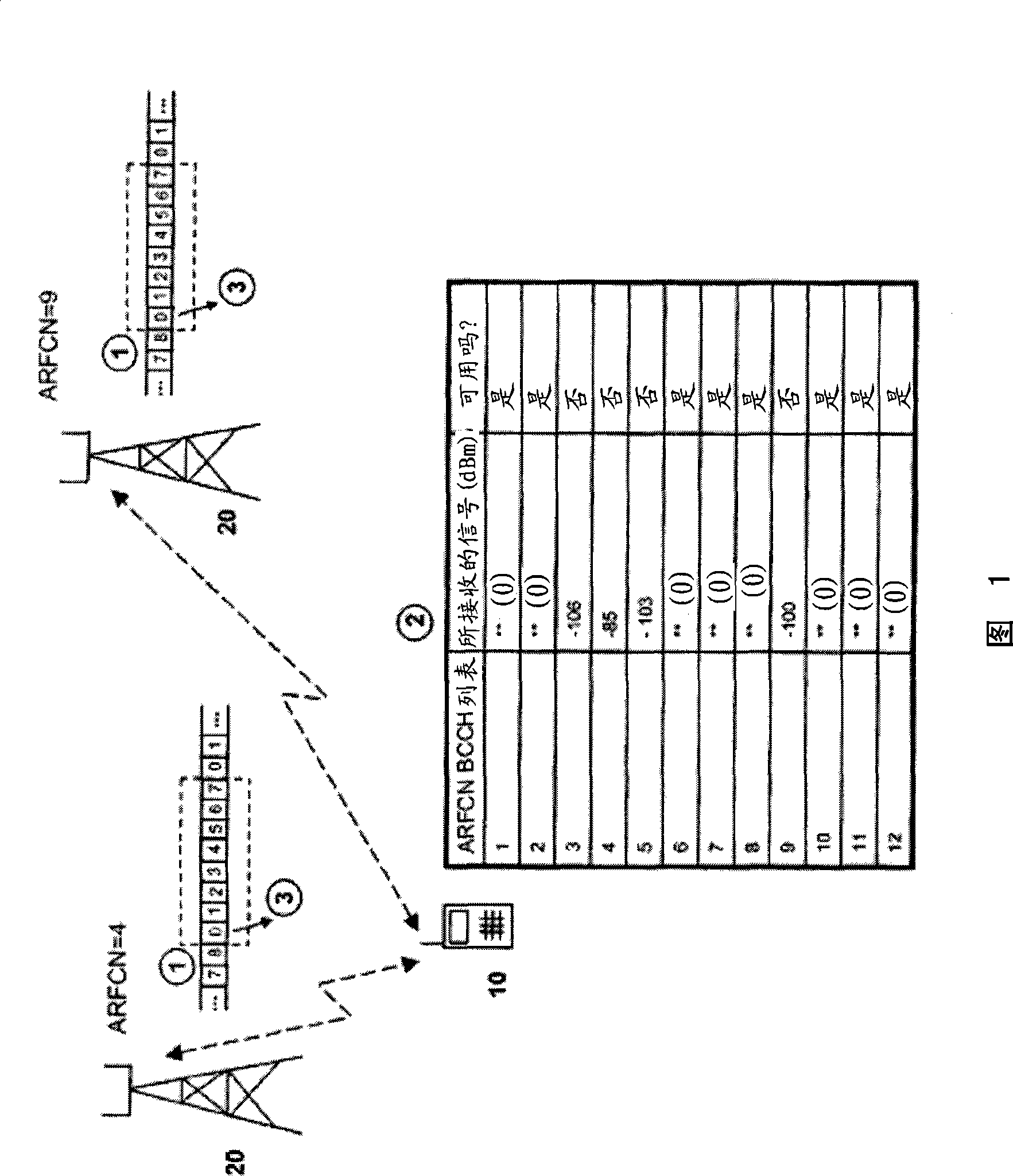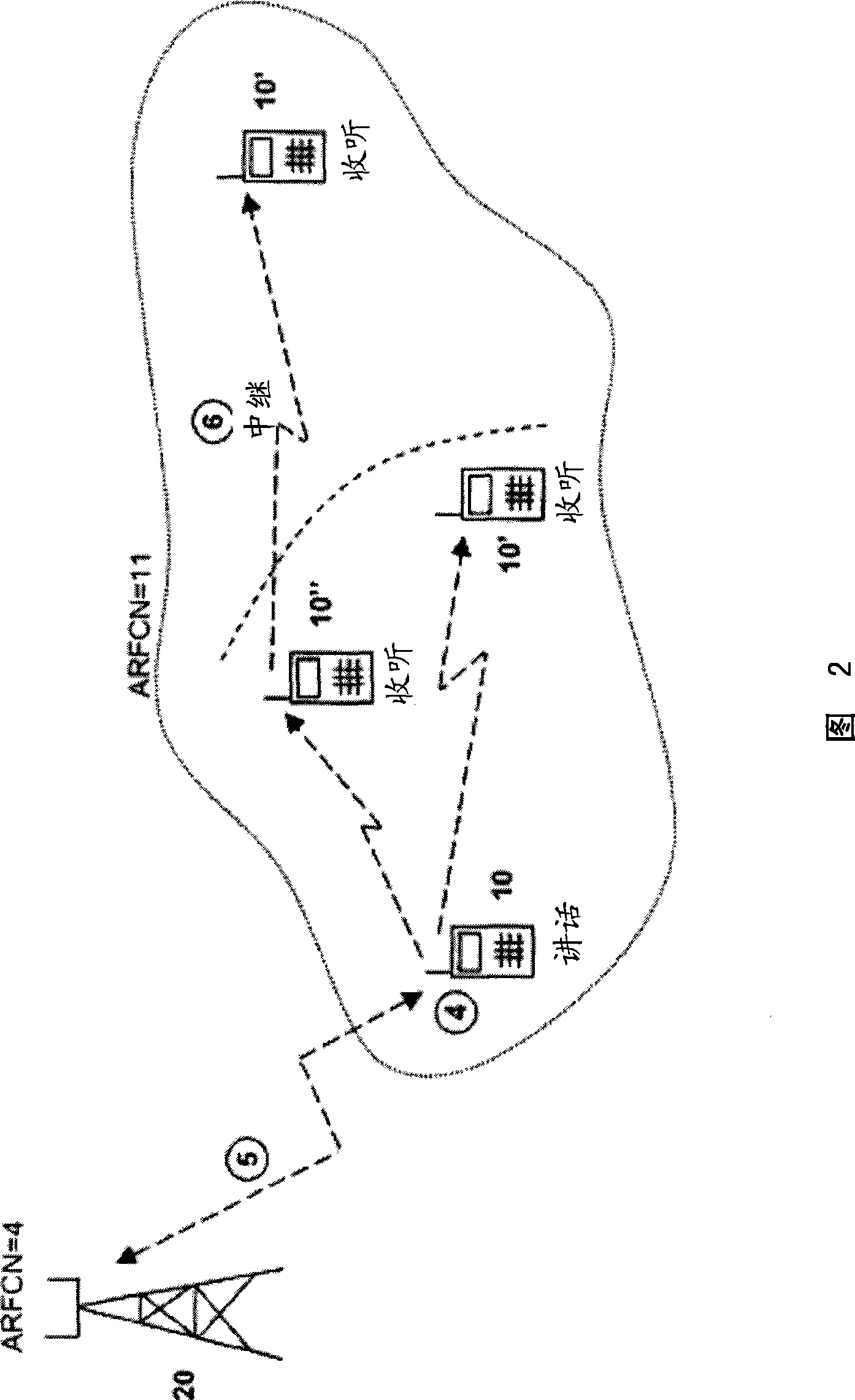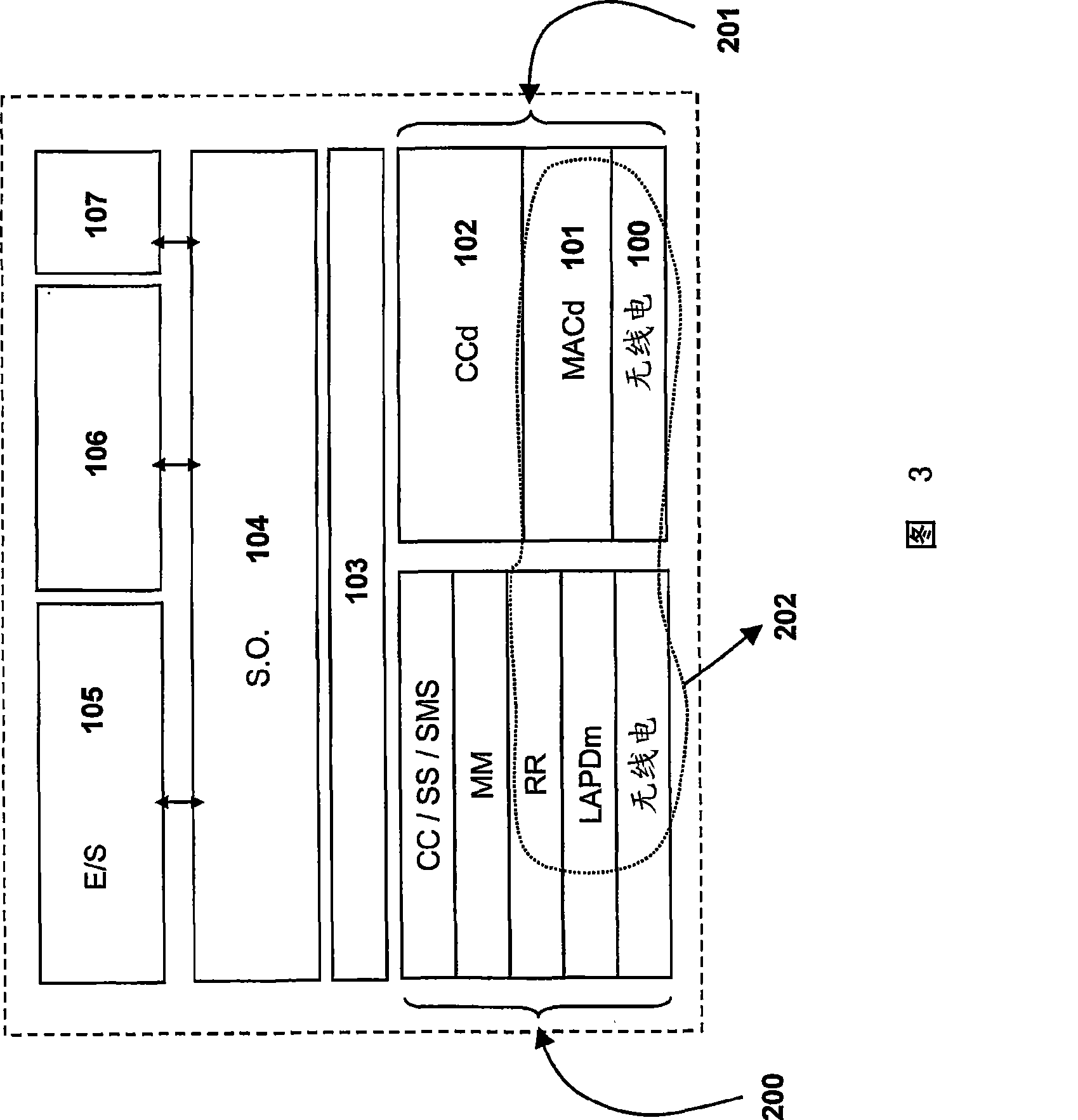Method and system for establishing a direct radio communication between two or more user devices in a cellular mobile communication system
A technique of user equipment, communication system, applied in the field of processes and systems for establishing direct radio communication between two or more user equipment within a mobile cellular communication system
- Summary
- Abstract
- Description
- Claims
- Application Information
AI Technical Summary
Problems solved by technology
Method used
Image
Examples
Embodiment Construction
[0070] Figure 1 shows how a terminal can detect and select free resources: in this example, the frequencies of the operator's spectrum are not used in this area and their use does not interfere with the work of the network.
[0071] First, it involves finding free channels or resources in the cellular system - ie, those that are not being used and preferably do not affect the correct operation of the system (ie they do not cause interference) if mobile devices use them. Cellular systems mainly use three types of resource multiplexing: frequency (FDM), time (TDM) and code (CDM). What is called a resource or a channel is usually a combination of these.
[0072] In the GSM system, a channel corresponds to a combination of frequency and time slot (TS). Each frequency contains two pairs of 200KHz+200KHz carriers in the 900, 1800 (Europe) or 850, 1800 (US) bands. Furthermore, for each frequency, time is divided into consecutive segments or frames (4.615 ms per frame), such that ea...
PUM
 Login to View More
Login to View More Abstract
Description
Claims
Application Information
 Login to View More
Login to View More - R&D
- Intellectual Property
- Life Sciences
- Materials
- Tech Scout
- Unparalleled Data Quality
- Higher Quality Content
- 60% Fewer Hallucinations
Browse by: Latest US Patents, China's latest patents, Technical Efficacy Thesaurus, Application Domain, Technology Topic, Popular Technical Reports.
© 2025 PatSnap. All rights reserved.Legal|Privacy policy|Modern Slavery Act Transparency Statement|Sitemap|About US| Contact US: help@patsnap.com



